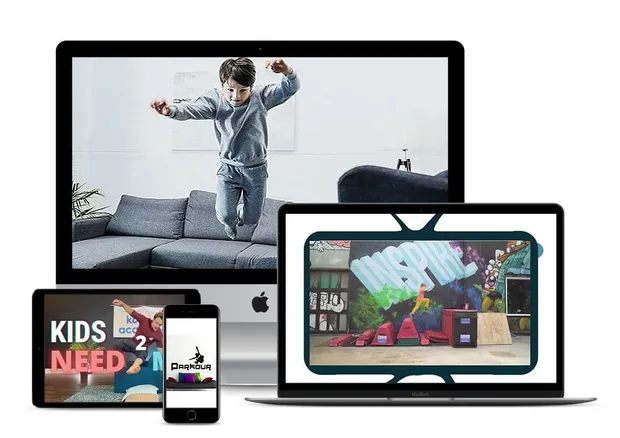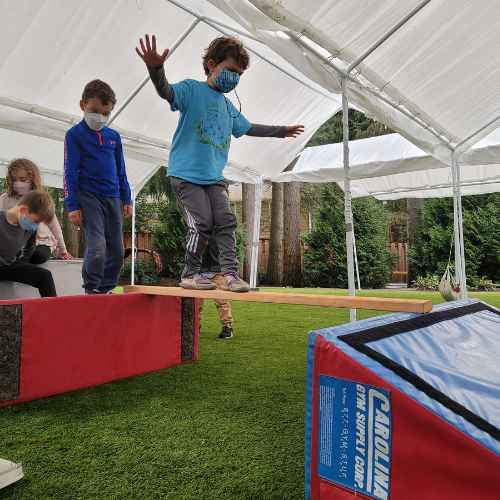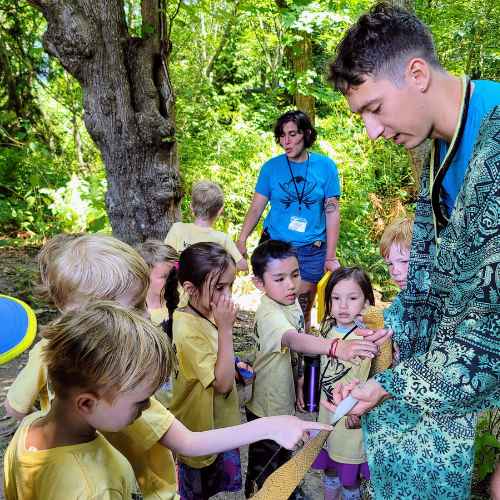
If we’re being honest, you know that Mother’s Day isn’t always the spa day we see on Instagram. It’s usually a regular Sunday… with pancakes. Made by a seven-year-old in a kitchen that looks like a flour bomb went off.
And while those scribbled cards and extra hugs are sweet, the truth is, Mother’s Day often means even more work for moms. Check any home and you’ll probably see that it’s mom who’s still helping kids do something special, wiping noses, tracking everyone’s schedule—and doing it all while smiling because, hey, it’s “your special day.”
Here’s a wild thought: what if we used Mother’s Day to actually teach kids something real? What if instead of just saying “thank you,” they showed it—with effort, empathy, and those little moments that make every parent’s heart melt?
We’re not talking about grand gestures or anything too extreme, more along the lines of:
- The tough boy who usually shrugs off feelings, suddenly wrapping mom in a bear hug and whispering “Thanks for everything.”
- A kid who picks up their toys without being asked.
- A partner who takes the mental load seriously and teaches the kids how to notice and help.
These aren’t Hallmark moments. They’re real-life milestones—the kind that build self-awareness, compassion, and a sense of responsibility.
This Mother’s Day, we’re going deeper than construction paper crafts (though we still love those). We’re tapping into what Kong Academy does best: using play, movement, and real-life reps to help kids grow. Gratitude and respect don’t land all at once. They take repetition, small wins, and the kind of learning that sneaks in through real-life moments. And if we’re looking for the perfect day to get in a little extra practice—might this just be it?
1. Turn Gratitude Into A Game
Let’s start with, instead of the usual “say thank you to Mom” prompt, let’s make it playful.
Get creative and turn gratitude into a quick-fire challenge: how many kind things can you do before lunchtime? Kong-style kindness could mean helping a friend stand up during play, cheering on a sibling, or offering a helping hand when someone’s stuck. Keep it light, keep it moving, and keep it coming from the heart.
Kong even wrote about this in our What Superheroes Can Teach Kids About Acts Of Kindness article—where we explore how kindness is a real source of strength. And then? Slow it down.
Let the moment breathe. Help your kids notice how it felt to be kind—and how good it felt to be noticed. That’s what makes it stick. That’s what makes it something they remember the next time they get a chance to show up for someone else.
2. Help Kids Say “Thanks for All You Do” (In A Real Letter)
If you’re reading this and you’re not the mom in question—dads, partners—this is your moment to step in. Kids don’t automatically know how to express appreciation, after all, what does a child thank her mother for? That’s something they learn by doing. And right now, they need a little help from you to put their feelings into words.
Instead of a generic “You’re the best, Mom!” card, encourage your kids to write a short letter that answers:
- What do I see Mom do every day?
- How does she help me?
- What’s something I love that she does for our family?
You can guide younger kids with sentence starters like:
- “I noticed you…”
- “Thank you for helping me when…”
- “You make me feel safe when you…”
If you’re wondering, should you make kids say thank you, pause a moment. This isn’t to suggest you force politeness or check a box. It’s about giving your kids the tools to reflect and express something real. That way these notes become more than construction paper and crayon. They become practice runs for a life of noticing when other people show up for you and thanking them for doing so.
This time, it’s for their mom—perfect, complicated, filled with human feelings. Next time, it might be for their teacher. Or a friend. Or you.
And when a kid sits down—really sits down—to think about what their mom does for them? That might be the moment they stop seeing her as just “Mom” and start recognizing her as a whole person who makes magic happen every single day.
3. The “Mom’s Day Off” Game
Since moms don’t usually get any day off, even on Mother’s Day, why not flip the script?
Create a simple, silly game where the goal is to give Mom as many five-minute breaks as possible. Set a timer. Make a chart. Celebrate every win.
Team up siblings or friends. Maybe one takes over snack time while the other folds some laundry. Maybe they read to the younger sibling so Mom can finish her tea (while it’s still warm for once). Maybe they manage to clean up breakfast without dragging her into the drama over who spilled the syrup.
The point isn’t perfection. The point is to try.
Track points if you want. Or just call out each moment as a “Mom’s Day Off” bonus. And yes, extra gold stars if you manage to refill her coffee without her asking—and without making a mess she has to clean up.
These may be small gestures, but showing kids they have the ability to step up and make someone else’s day a little easier builds life-long skills in generosity.
4. Play “Mental Load Detective”
We talk a lot about helping kids understand emotions, but what about helping them notice effort? Mother’s Day is a perfect time to introduce the idea that a lot of what moms do is invisible.
Use Mother’s Day to introduce kids to the idea of invisible work. Depending on their age, you might say:
- “Mom remembers all the things—like when the dog needs shots or who likes cucumbers but not pickles.”
- “Let’s help take care of the stuff no one notices.”
Give them a Mental Load Challenge:
- Find 3 things you can do today that make life easier for Mom.
- Do them without asking her first.
- At dinner, talk about what everyone did and how it helped.
This isn’t about making a child feel guilty for not helping or for not being aware, it’s teaching kids to open their eyes. It’s about teaching them to notice the effort behind the everyday—the invisible pieces that hold their world together. That kind of awareness doesn’t just appear; it has to be nurtured. The earlier kids learn to see effort, the more likely they are to pitch in as they grow up.
5. Use Movement To Say Thanks
For active kids, try turning a gratitude message into a movement challenge. Think parkour-style thank-you notes—but themed around Mom’s actual day.
Start with a quick energy boost using the Floor Is Lava Brain Break, then help the kids design a “thank-you” obstacle course where every section represents something their mom does.
One area might be the “laundry mountain” they have to scale. Another could be the “school lunch prep zone” where they do a balance challenge with pretend lunch bags. Maybe there’s a hug station, a driving loop, and a bedtime book crawl.
Once they finish the course, they head to the final checkpoint and shout their biggest, most dramatic thank-you to Mom.
But here’s the kicker: they clean up the entire obstacle course afterward. No complaining. No “but it wasn’t my mess.” That part is just as important as the course itself.
Because helping out and showing gratitude go hand-in-hand. And when kids learn that giving thanks includes taking responsibility? That’s the moment it starts to stick.
6. Gratitude In Disguise
Sometimes the most touching moments are the quiet ones. Why not encourage kids to do a task without announcing it?
Talk with them ahead of time—what are some ways they could help without being asked? Brainstorm together: look around the house, the yard, the daily rhythm. Can they spot a moment where Mom usually steps in, and quietly take it over instead?
Did they put their dishes in the sink? Help a sibling with their shoes? Bring the groceries in from the car? Tidy up the hallway without being told?
These moments may seem small, but they matter. When kids act without expecting fanfare, they practice intrinsic motivation and learn how satisfying it feels to simply be kind.
7. Model It Loud & Proud
One of the most powerful things a parent can do on Mother’s Day is model gratitude. If there’s a partner in the picture, this is your moment to lead by example. Kids need to see appreciation in motion. And not just once a year, but starting now.
- Say thank you aloud. Not just “thanks,” but a full sentence that names what you notice: “Thank you for making our mornings less chaotic.”
- Explain what you’re grateful for so kids learn what to look for.
- Invite the kids to join in: “Want to help me surprise Mom with a clean kitchen before she comes downstairs?”
You can also share why this matters to you. “Your mom holds a lot. I didn’t always realize that about my mom when I was your age. But now I see it—and I want you to see it too.”
Modeling respect, awareness, and real-life partnership is how kids learn to value the people around them.
So yes, say it. Show it. Be a little over-the-top. Kids are always watching. Let them see love and appreciation in action—and let them absorb that as a normal part of family life.
8. Keep The Momentum Going
Gratitude isn’t a one-day lesson. It’s a daily practice that starts with paying attention.
Start simple. Around the dinner table, or even while driving to school, ask questions like:
- Who helped you today?
- Who did you help?
- What’s something small you’re grateful for?
These small check-ins build a habit of noticing. Over time, they shift kids from “What did I get today?” to “Who showed up for me?” and eventually to “How did I show up for someone else?”
At Kong Academy, we see this growth happen every day—on the playground, in our afterschool programs, in summer camp adventures. When kids are given space to reflect and encouraged to practice kindness through movement and play, those lessons stick.
That’s why Kong’s programs are filled with tiny opportunities to reinforce gratitude, emotional awareness, and respect. From helping a friend during a game to cheering each other on after a challenge, our kids learn how to say thank you with their actions, not just their words.
And it’s something they take home, too. That’s the real win.
Because honestly? Mother’s Day should be every day.
But if we use this one to plant a few seeds of empathy and daily appreciation—then we’re giving our kids something bigger than a holiday. We’re giving them a skill that lasts a lifetime.
And we’d be honored to help you keep that going, day after day. Learn more about Kong Academy’s programs here.
GET Access to the ULTIMATE PLAY DATE PACKAGE (Value: $49) for FREE!


7-Day Crystal Shard Adventure
Unleash your child’s potential with our 7-day crystal shard movement adventure!




